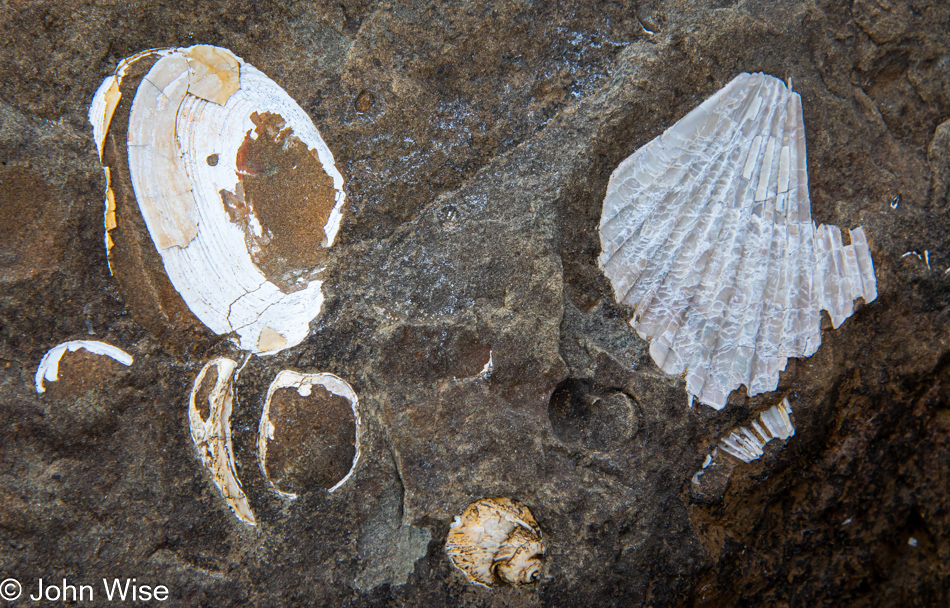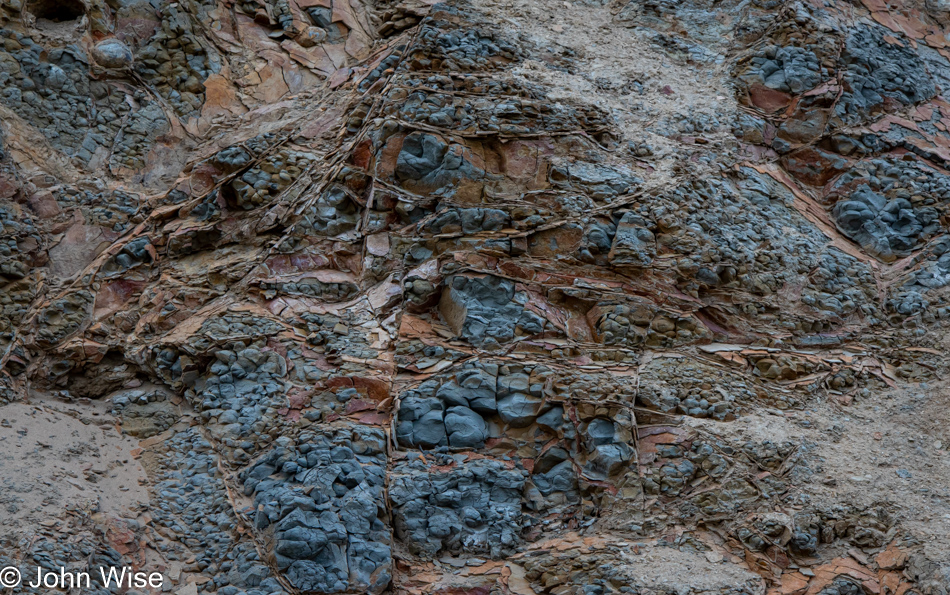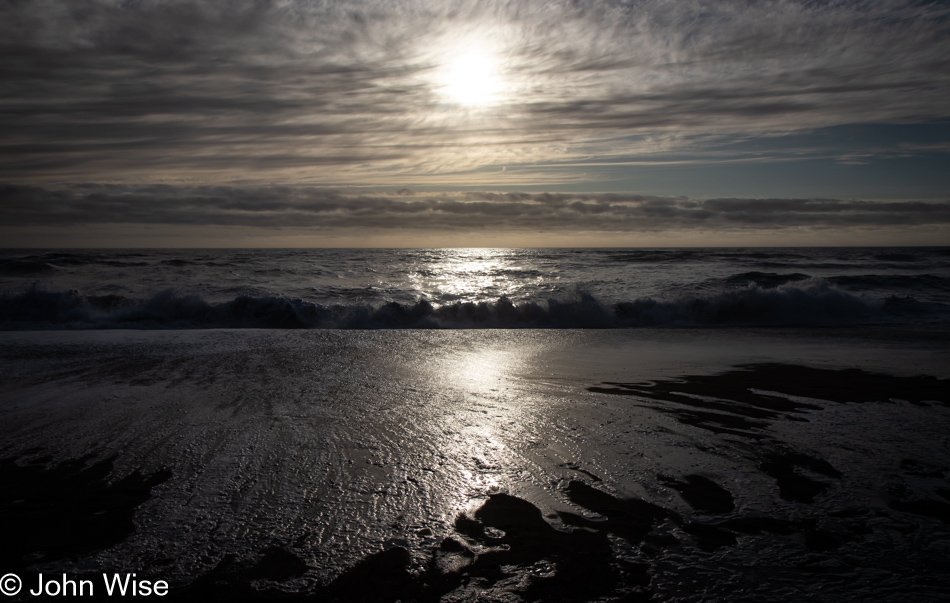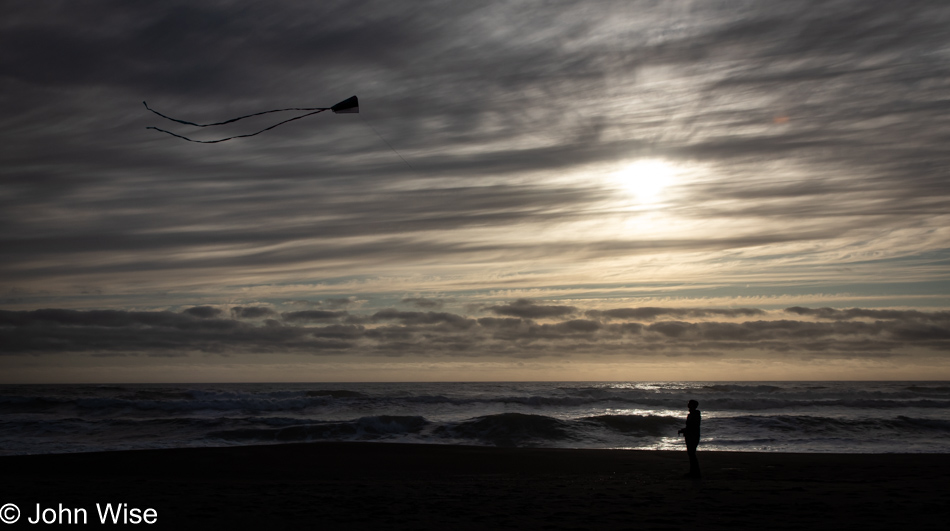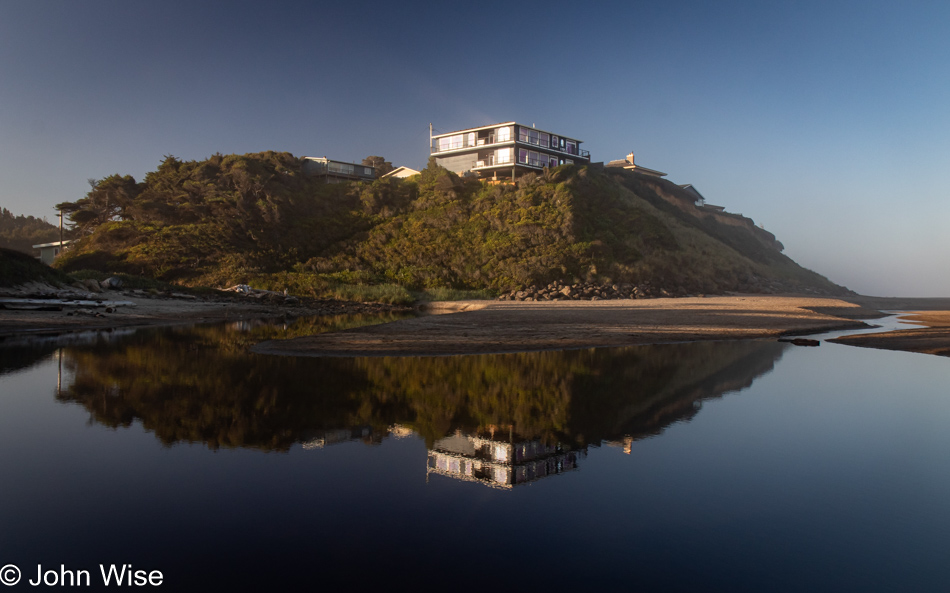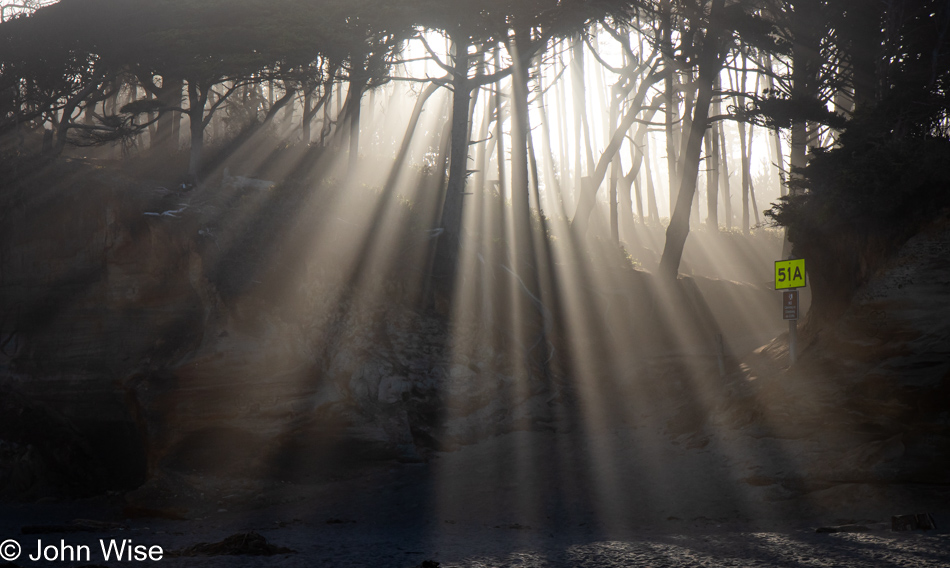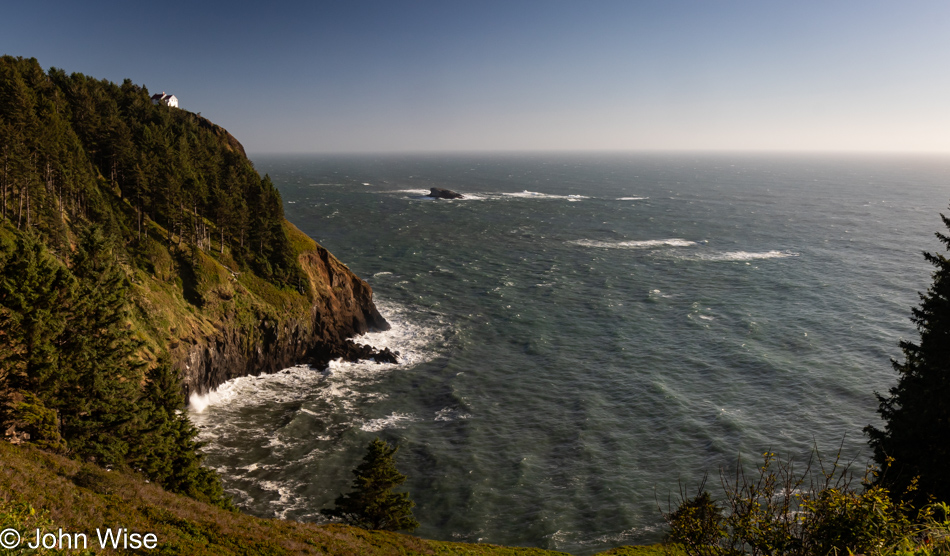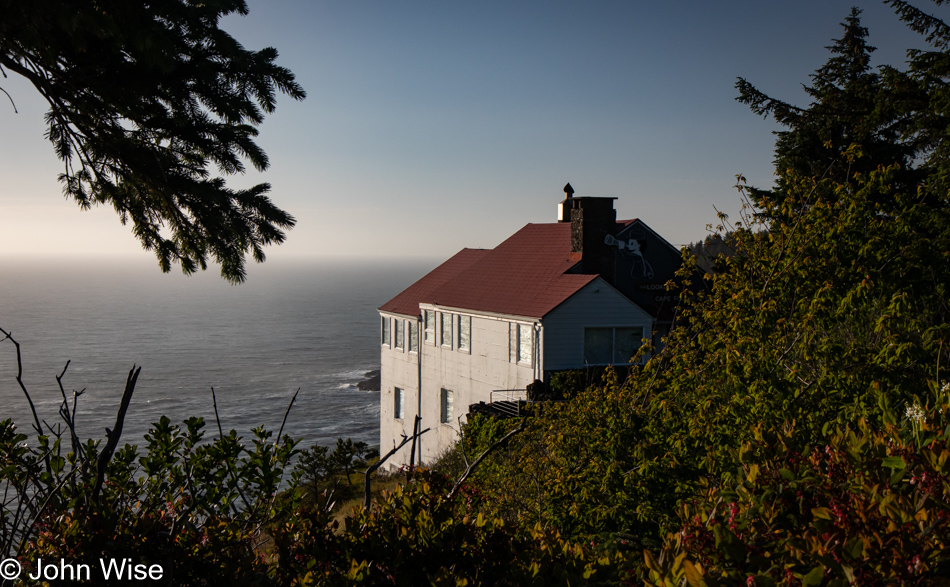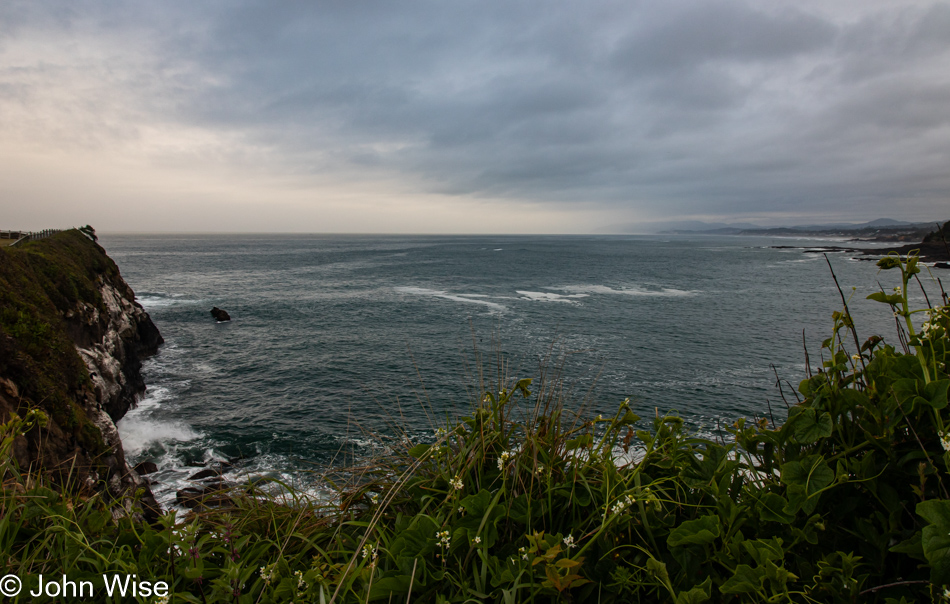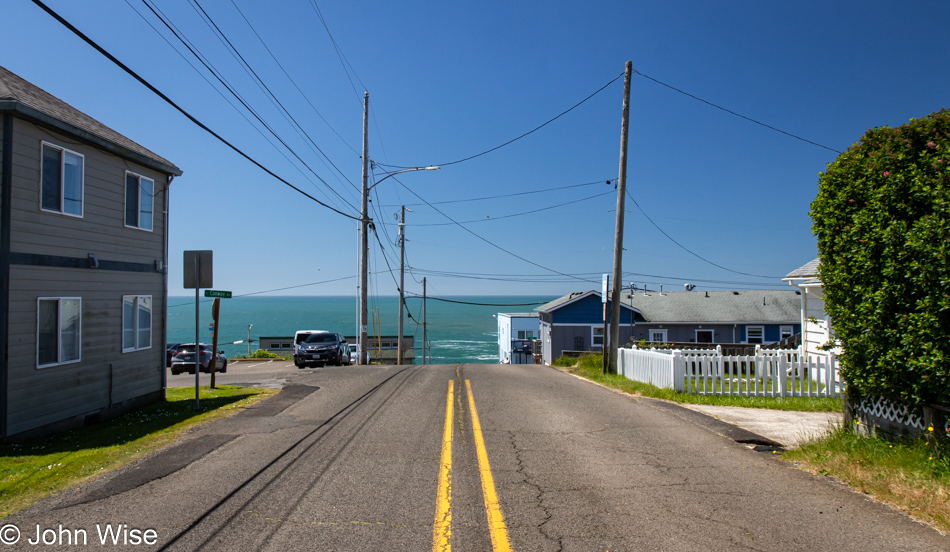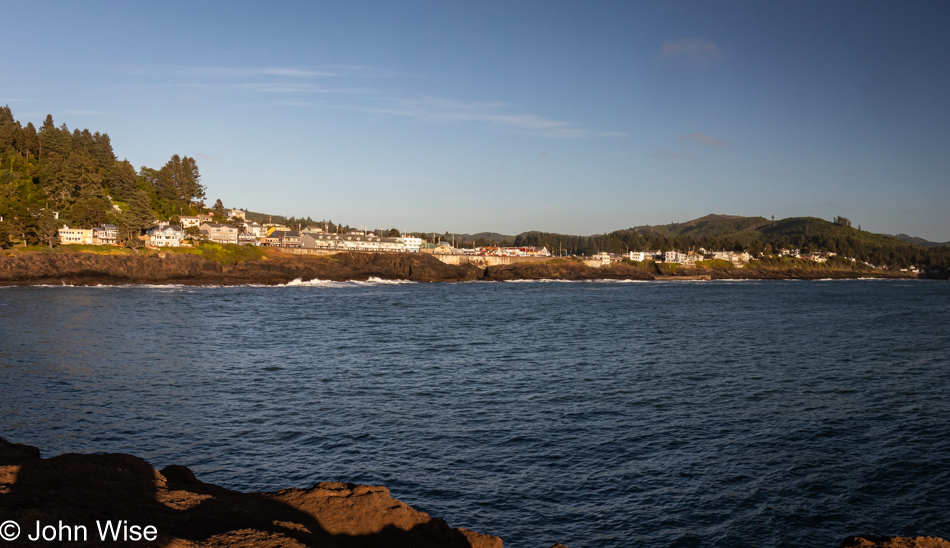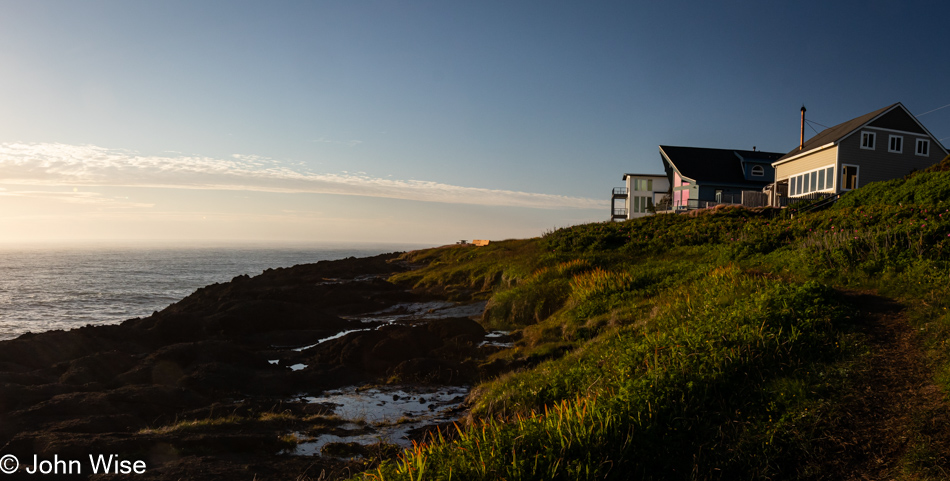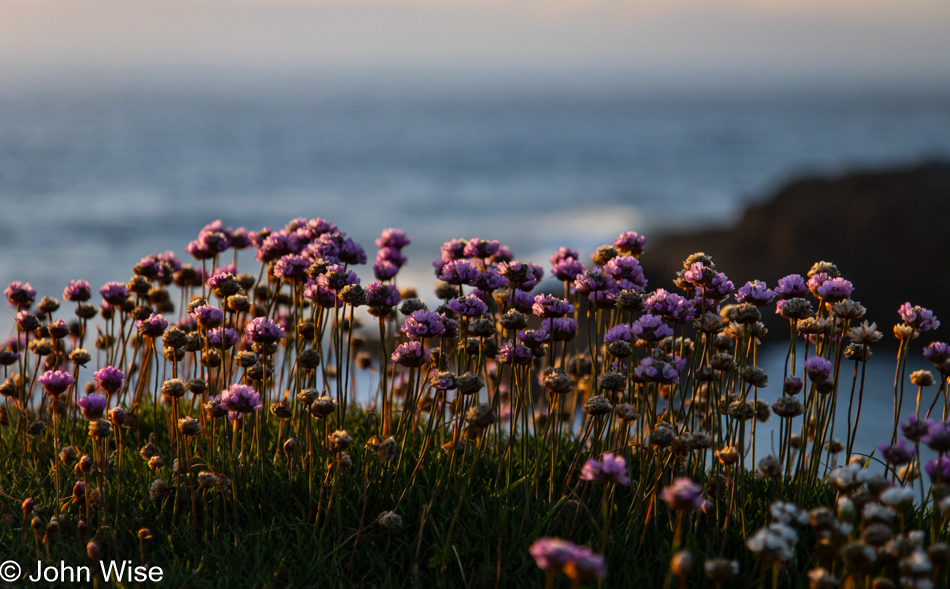
This is our view out of the kitchen window; in the distance is the ocean. What’s wrong with this picture? We’ve not yet been out at that ocean today because we opted to sleep in, and not only that, but we’ve also been too lazy to get moving. This actually is a common thing for us on Saturdays, though it shouldn’t be when our time on the coast is rather limited. Every moment in our little slice of paradise by the sea should be maximized, and in reality, they are, even when we go slow.

Our first stop today was not for a walk. Instead, we drove south for breakfast at the Newport Cafe in, you guessed it, Newport. It’s a funky little place we’ve been visiting since 2012 when we had our first 4-pound Ultimate Monster Burger when it cost $13.95. Today, that burger is $25, but we weren’t here for that at this time of day, though they’ll serve one up if you really want it. Nope, we were here for the Pacific Seafood Scramble, which includes crab, shrimp, scallops, and veggies. Even at $21, there’s enough seafood in this dish that it feels like a bargain.
This sculpture at Nye Beach in Newport was carved by a local artist, German-born Juergen Eckstein. It was made from a piece of redwood that washed up on a local beach. The piece is called “Absence of Emptiness.”
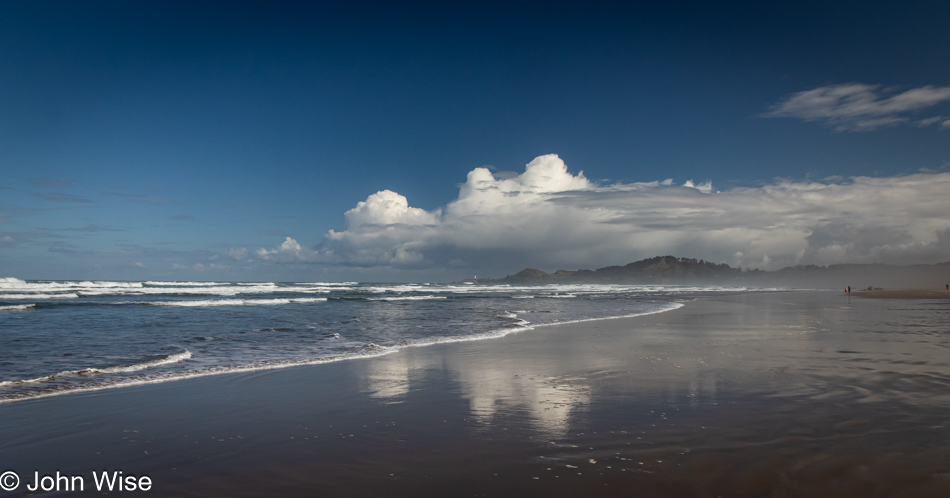
We are at Nye Beach to walk off our over-indulgent breakfast. If you can see the Yaquina Head Lighthouse in the distance, we are heading that way.
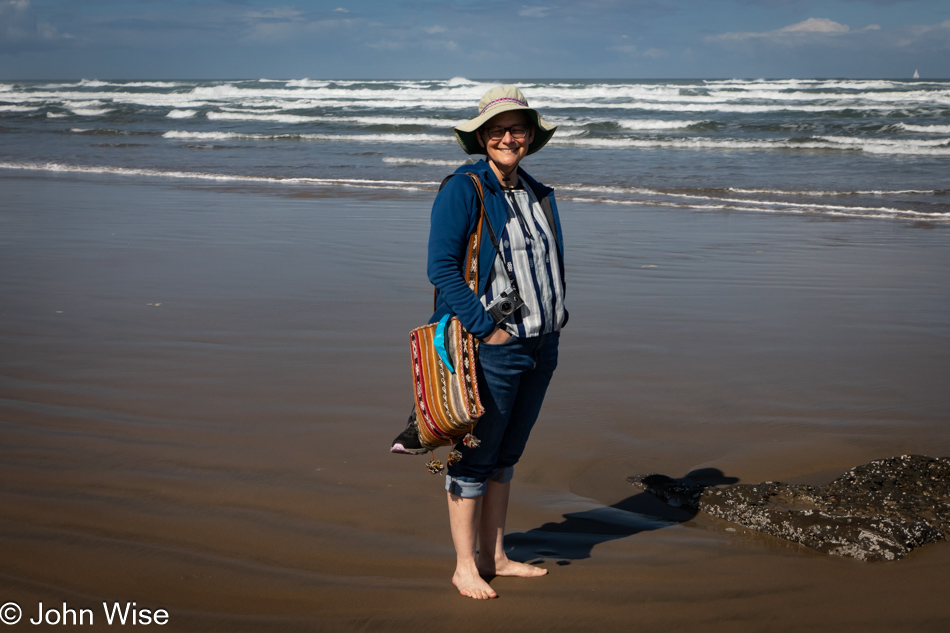
We couldn’t ask for a more beautiful day, and had we needed anything, Caroline likely had it with her in that bag. It may look smallish, but she carries a kite, binoculars, some knitting, hunting gear, an inflatable small raft, a change of clothes, and a fax machine, I swear.

Our form of beach combing also takes in finding random clumps of grass growing on the world’s smallest sand dune.

Getting closer to the lighthouse.

One of the best specimens of sand dollars we’ve found yet, it’s coming home with us if it doesn’t crumble before we get there.

I’ve seen a lot of beach penis in my lifetime, but this is a capital specimen that I can get behind, and I assure you, it was just as amazing in person as your imagination is telling you it is. Just look at its joyous smile.
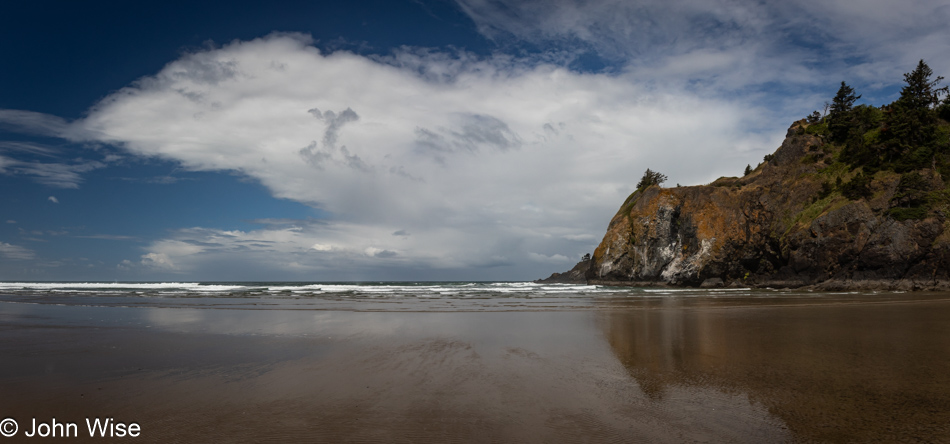
The map says it’s a 2.5-mile (4km) walk from Nye Beach to Yaquina Head. although through our zigzagging, we turned it into a 3.5-mile (5.6km) walk, but we couldn’t have asked for better weather. It was just beautiful out there.
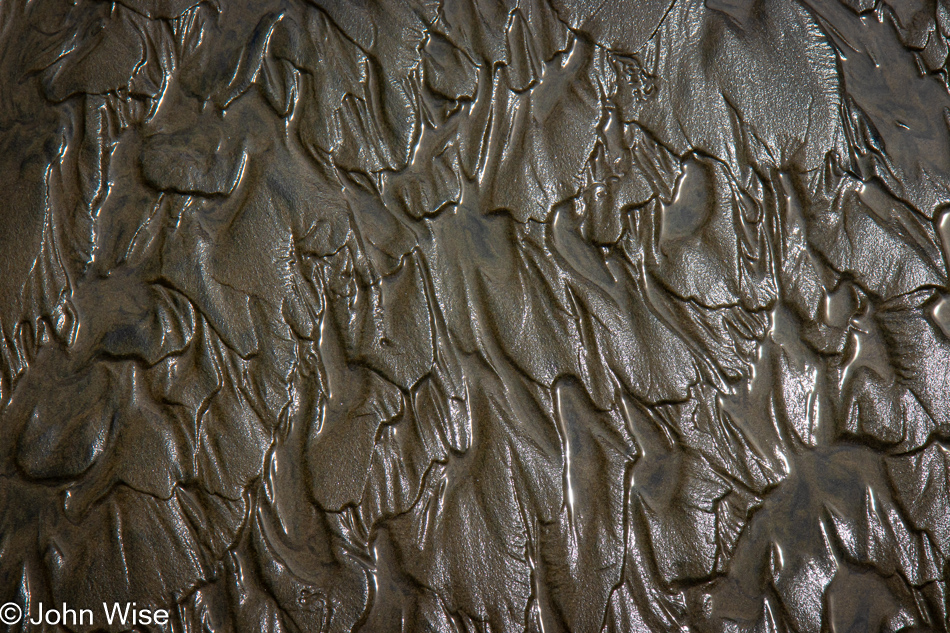
This is the edge of a streambed crossing the beach between us and the cliffside of Yaquina Head that we thought we’d reach out and touch before turning around, but in the end, believing we had another 7,500 steps (3.5 miles) back to our car, it wasn’t all that important.

Off in the distance is where we need to be.

Out of nowhere, a tempest started moving in from offshore, but I was certain it was no threat. That was until it started raining on us. Good thing Caroline carries rain jackets, umbrellas, and a waterproof case for my camera in that bag on her shoulder. “Excuse me, what do you mean you didn’t pack those today, wife?” I asked in disbelief. At 9:00 p.m., when I was writing this post, my fleece was still wet.

Twenty-five miles south and the sun was out, as was good fortune. An hour before Bread & Roses in Yachats was closing, they still had a few things on hand that grabbed our attention, such as this Celestial Snail Danish that was made more interesting by its name due to the connection to Caroline’s childhood nickname, Schnecke, the German word for “snail”. Around the corner and across the street we visited the Green Salmon Coffee Company and picked up three pounds of Ethiopian Yirgacheffe coffee beans, with one of them set to be a gift to our friend Brinn, who happened through Yachats about a decade ago.

Next up was a stop at Ona Restaurant, also in Yachats. While we had a reservation for 6:30 this evening, we opted to have lunch here instead. Originally, the idea was that we might take a room further south to have a weekend at another coastal location, but with our digs in Depoe Bay being as perfect as they are, we are quite happy to stay right there. Plus, the weekend rates of lodging at this time of year are way out of hand. With a photo of our main dish just below, I have to describe our appetizer, which we have had before and is half of the reason we are back. It is the Rainforest Maitake Mushroom Pâté with marinated onions, arugula, olive tapenade, and feta. It is Wunderbar.

This is the Ona Pasta featuring wild Mexican prawns, scallops, clams, rockfish, halibut, and baby spinach in a saffron cream sauce. It is as great today as it was a couple of years ago when we first tried this dish.

Five days was a long time for Caroline to be on the Oregon coast without having the opportunity to buy yarn, but here she is, happy as a clam to have this chance to shop for the fibery reason of her existence. The shop is called Tidewater Creations in Waldport and is also the home of Twisted Tidewater, the owner’s own brand of beautiful hand-dyed yarns and spinning fiber. Caroline was able to pick up some mushroom-dyed yarn as well as pretty batts for spinning while I carefully selected a colorful skein of sock yarn.

What started as the need for the restroom here at the Lost Creek State Recreation Site turned into another 90-minute walk down the shoreline. Gotta get the steps in to fight against the heavy carb indulgences.

We didn’t know what shells these were while out on the beach; it turns out that they are keyhole limpets. Their name shouldn’t fool you, though; while they are a species of sea snail, they are not, in fact, true limpets. What’s a limpet, you ask? Sorry, I’m not going to copy and paste every Wikipedia article I read. While I was in research mode, I also confirmed the identity of these tiny jumping things that we keep seeing on the beach, especially near rotting plants. They are beach hoppers, better known as sand fleas, though they are in no way related to fleas. They are related to crabs and shrimps, tiny versions of them, and are on the beach to help clean up organic matter; it is the lowly beach hopper that is responsible for the tiny holes on the shore as waves recede.

Need a beach to yourself? Visit Oregon in the summer.
After our drive back to Depoe Bay, getting through the photos and the majority of writing this post, we turned on the disco ball and lights at the hot tub before falling into the characters of Professors Roger and Virginia Clarvin at the Welshly Arms discussing the eating of succulent and juicy capons. If you don’t know the Rachel Dratch and Will Ferrell sketch from Saturday Night Live, this joke won’t work for you.













